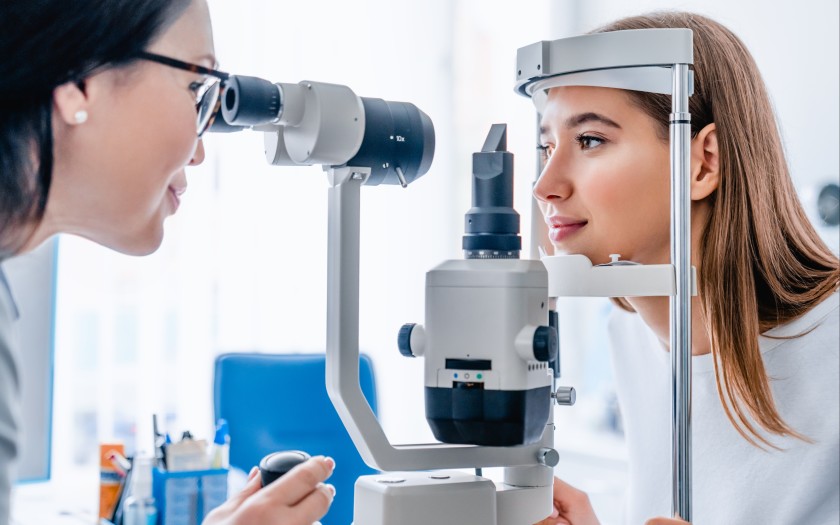
The Difference Between Standard Vision Screenings and a Comprehensive Eye Exam
Many people believe that a vision screening gives a complete overview of eye health, but there's more to the story. A vision screening, while helpful, isn't the same as a comprehensive eye exam.
At Grene Vision Group, we're dedicated to ensuring you have the full picture when it comes to your eye health. It's important to know that a comprehensive eye exam goes beyond what a vision screening can offer. These thorough exams are crucial for a deep understanding and proactive care of both your eye health and overall well-being.
In our article, we explore the key differences between a vision screening and a comprehensive eye exam. We'll help you understand why a full exam is important and offer you guidance on the right timing for these exams.
What is a standard vision screening?
Also known as an eye test or vision test, this brief exam is a crucial first step in identifying potential vision issues and eye disorders. It's important to note, however, that a vision screening is not meant to diagnose or treat these conditions. Instead, it serves as an initial check to identify people who may need to see a specialist for a comprehensive eye exam.
Vision screenings are a standard practice, especially for children in schools or at pediatricians' offices. These screenings play a vital role in detecting conditions like lazy eye (amblyopia) and crossed eyes (strabismus). Timely treatment for these conditions can often prevent vision loss, so early detection is critical.
For adults, routine vision screenings are less common, but many encounter vision tests for specific purposes, like obtaining a driver's license in the U.S. These tests, typically given at the DMV when your license is issued or renewed, assess how well you can see. Adults might also experience eye screenings at primary care visits or at health events organized by hospitals and community organizations. Similar to screenings for children, these are designed to spot potential problems, but a comprehensive exam is necessary for diagnosis and treatment.
What do they look for in a standard vision screening?
Vision screenings can include different types of exams, such as one or more of the following:
Close-up vision test: This test can be given to both children and adults but is often given to people who are 40 or older to determine if their close-up vision is worsening.
Color blindness test: Both children and adults can be given this test, which helps determine if a person is colorblind.
Visual acuity test: This can be given to children and adults and helps determine their distance vision.
Visual acuity test for preschoolers: This is just like the regular distance vision test but is adjusted for non-readers.
What is a comprehensive eye exam?
Comprehensive eye exams are more detailed eye tests done at your eye doctor's office. These exams are extremely important because they can find health problems that have no signs or symptoms, even if they’re not eye related. During these exams, your eye doctor can spot early signs of over 270 systemic and chronic diseases, like heart disease, some types of cancer, and diabetes.
Catching these health issues early means you have a better chance of treating them successfully. These exams are also great for finding eye diseases early on, like glaucoma, diabetic retinopathy, and age-related macular degeneration (AMD). Spotting these eye problems early can help your doctor take steps to prevent vision loss.
During a comprehensive exam, your doctor might do a dilated exam. A dilated exam allows your doctor to see important parts of your eye, like the blood vessels and the optic nerve that connects your eye to your brain. Seeing these components can help your doctor notice signs of health issues that often show up in the eyes first.
What happens during a comprehensive eye exam?
During a comprehensive eye exam, your eye doctor might do several things:
First, they’ll ask about your medical history. This includes questions about your vision, overall health, family medical history, any medications you’re taking, and whether you use glasses or contact lenses.
They may also check how well you can see using an eye chart, also known as measuring your visual acuity. Your eye doctor will use a Snellen chart, which has big and small letters in rows or columns, to help them assess how well you can see different shapes and letters.
Your doctor will examine all parts of the eye and its mobility. This means looking at different parts of your eyes to see how they move using a special microscope called a slit lamp. They may also use dilating eye drops to get a better view inside your eyes and check for any signs of disease.
Sometimes, depending on your individual eye health needs, your doctor may use other tools and tests to ensure you don’t have any other eye problems.
A quick vision screening isn’t enough to fully take care of your eyes or vision. To get a complete, thorough check-up, schedule a comprehensive eye exam with Grene Vision Group.
Find a Grene Vision Group near you and book your appointment today!

 316-636-2010
316-636-2010 316-609-2177
316-609-2177